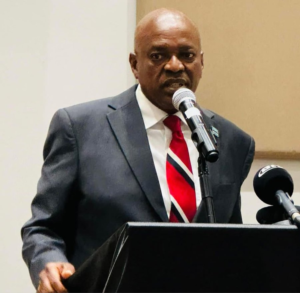CENSORSHIP OR SAFEGUARDING? ZIMBABWE’S BATTLE OVER HOPWELL CHIN’ONO’S SOCIAL MEDIA POSTS

In a recent development, Zimbabwe’s Chief Director of Strategic and Presidential Communications, Dr. Anyway Mutambudzi, has ignited a heated debate by labelling veteran journalist Hopewell Chin’ono’s social media posts as “a threat to national security.” This declaration, seen by many as an attempt to silence a critical voice, has raised concerns about the state of media freedom and freedom of expression in Zimbabwe.
When government officials, in any part of the world, categorize individuals, especially journalists, as “a threat to national security,” it invariably puts them in a precarious position. Such labeling can make them targets for harassment, arrest, or even physical harm. But is this categorization of Hopewell Chin’ono’s social media content as a threat to national security justified, or is it a veiled attempt to stifle dissent and criticism?
Dr. Mutambudzi’s assertion that Chin’ono’s output seeks to create a divide between citizens on one side and the ruling party, government, and the state on the other is at the heart of this controversy. In his view, some of Chin’ono’s posts, when taken together, pose a real threat to national security. However, this is not the first time such allegations have been made against a journalist in Zimbabwe, and it raises questions about the balance between safeguarding a nation and stifling the freedom of the press.
Zimbabwe has a complex history when it comes to press freedom. Over the years, journalists and media outlets have faced intimidation, harassment, and censorship, leading to a climate where critical voices are often suppressed. In such an environment, any attempt to classify a journalist’s work as a threat to national security is met with skepticism and concern, as it can be perceived as an effort to curb dissent and maintain political control.
Hopewell Chin’ono, a veteran journalist with a history of exposing corruption and human rights abuses in Zimbabwe, has used social media as a powerful tool to disseminate information and opinions. His investigative work has led to high-profile arrests and resignations, making him a prominent figure in the country’s media landscape. However, it has also made him a target for those who wish to silence his voice.
Critics argue that classifying Chin’ono’s social media posts as a threat to national security is a thinly veiled attempt to undermine his credibility and discourage him from continuing his investigative work. They argue that such accusations are often used to justify oppressive measures against journalists who challenge the status quo.
On the other hand, proponents of Dr. Mutambudzi’s stance assert that there is a genuine concern regarding the potential impact of Chin’ono’s posts on national stability. They argue that media outlets and journalists have a responsibility to ensure that their reporting and commentary do not incite violence or create divisions within society. In this view, classifying certain content as a threat to national security is a legitimate measure to protect the country’s stability.
The key issue at hand is striking a balance between safeguarding national security and upholding freedom of expression. In a democracy, a vibrant and independent media is essential for holding those in power accountable and ensuring transparency. However, there are limits to this freedom when it comes to incitement of violence, hate speech, or the dissemination of false information that could lead to public unrest.
Zimbabwe, like many other nations, must navigate this delicate balance. While there is a need to address genuine concerns about national security, it is equally important to avoid using such concerns as a pretext to suppress dissent and curtail media freedom. Transparency in the decision-making process regarding what constitutes a threat to national security is crucial to maintaining public trust.
Moreover, the government should consider engaging in dialogue with journalists and media organizations to address concerns and find common ground. This approach could help foster a more open and constructive relationship between the state and the media.
In conclusion, the controversy surrounding the classification of Hopewell Chin’ono’s social media posts as a threat to national security highlights the ongoing struggle for press freedom and freedom of expression in Zimbabwe. While there are legitimate concerns about maintaining national stability, it is imperative that any actions taken do not infringe upon the fundamental right to freedom of the press. Striking a balance between safeguarding national security and upholding media freedom is a challenge that Zimbabwe, like many other nations, must continue to grapple with as it strives for a more open and democratic society.



